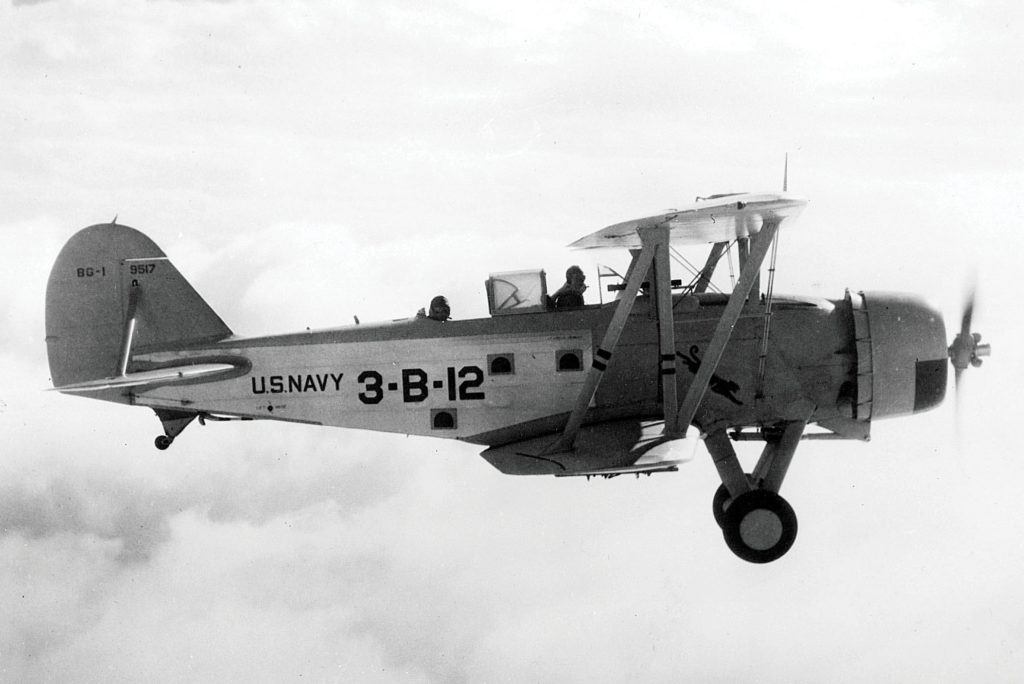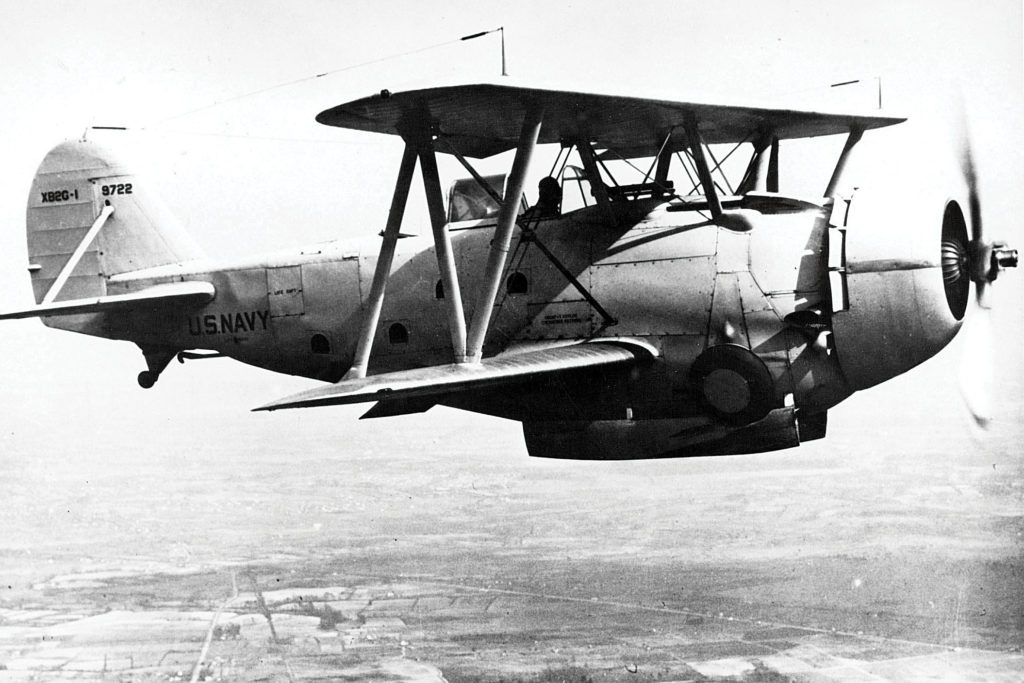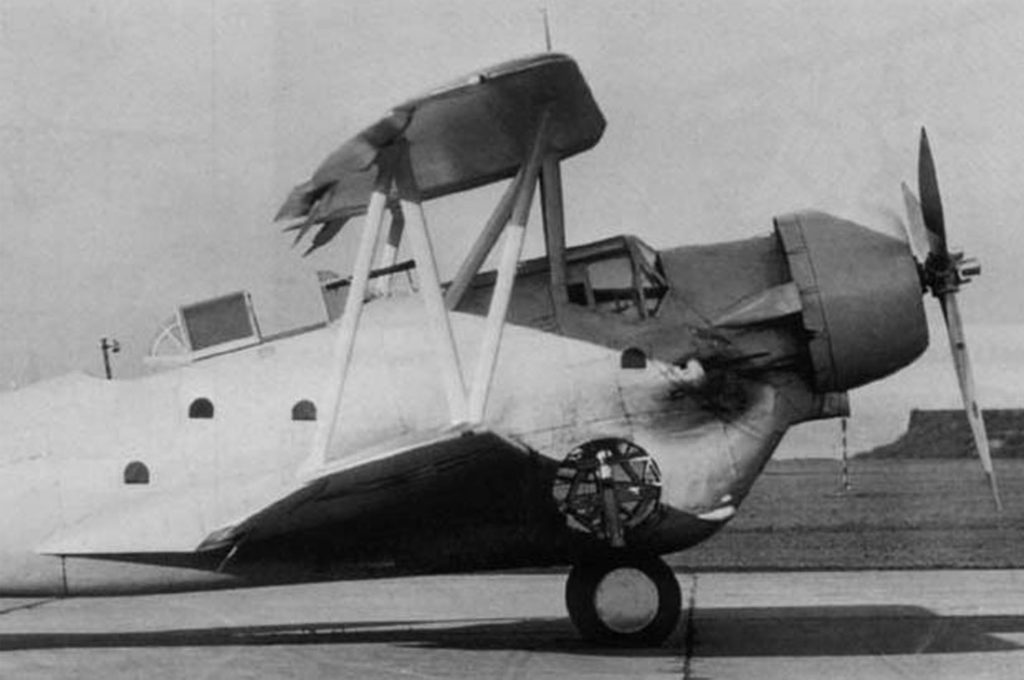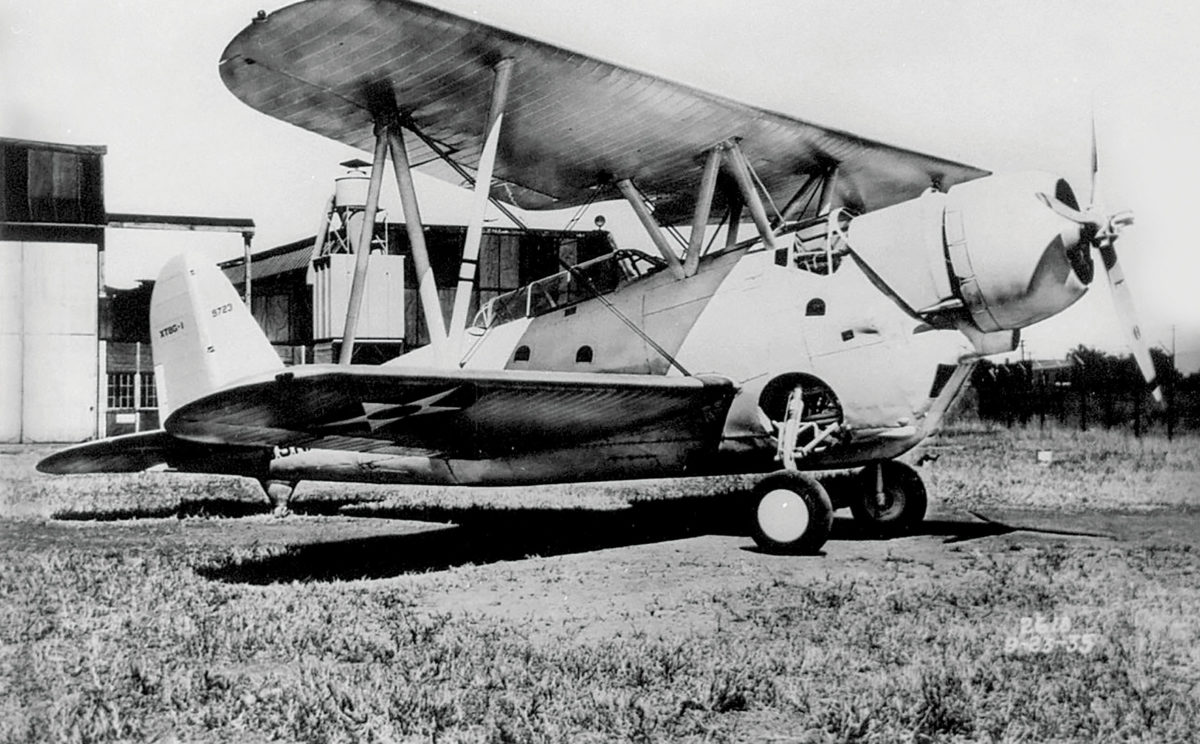During the 1920s, the navies of Britain, the United States and Japan built a series of rapidly improved aircraft carriers. At the same time, however, development of the warplanes they carried was limited by the essential requirement to alight from and subsequently land on a heaving flight deck at sea. Consequently, carrier aircraft were almost invariably biplanes with the added weight of tail hooks and other modifications required for deck landings. Given those factors, the naval powers resigned themselves to fielding carrier planes that were inferior to their land-based counterparts.
During the 1930s, however, the availability of more powerful engines encouraged the navies to embark on a dramatic effort to modernize their equipment. Amid that general trend, in 1934 the U.S. Navy held a competition to produce an up-to-date torpedo bomber. One of the contenders reflected the transitional nature of the years leading up to World War II, although in its case, it represented one refinement too few.
Founded in Cleveland, Ohio, in 1928 and soon handicapped by the Great Depression, the Great Lakes Aircraft Corporation built compact civilian two-seat biplanes, the best known of which was the 2T, also called the Sport Trainer, introduced in 1929. When early versions had trouble recovering from a flat spin, the company revised the upper wing with a slight sweepback that made it one of the best aerobatic planes in the U.S. right up to the 1960s. Although only 264 Sport Trainers were originally built, using both inline and radial engines, many are still kept flying as bona fide air classics.

When the U.S. Navy issued a specification for a new carrier-based dive bomber in 1932, Great Lakes scored again with its XBG-1. An open-cockpit biplane tested in mid-1933, it managed to outperform Consolidated Aircraft’s more expensive XB2Y-1 biplane. In November the first of 60 BG-1s, featuring a glazed canopy over both crewmen, entered production. The Navy operated them from the carriers Ranger and Lexingtonuntil 1938, but the Marines were still operating BG-1s in 1940.
By 1936, Great Lakes was experimenting with a variant designated the XB2G-1, featuring a more corpulent fuselage accommodating an internal bomb bay and landing gear that mechanically retracted into circular recesses in the fuselage side. It was not accepted for production, but the sole prototype saw some service with both the Navy and Marines. Waste not, want not.
Encouraged by its dive bomber’s modest success, Great Lakes was equally game to satisfy the Navy’s call for a torpedo bomber in 1934. Its contender, the XTBG-1, was once more a large biplane that reflected the latest refinements of the time. Like the XB2G-1, it had an internal weapons bay, enlarged to accommodate a torpedo, as well as retractable undercarriage. The most unusual feature of the prototype XTBG-1, Bu.No. 9723, was an added position for a torpedo aimer in a small enclosed cockpit just forward of the upper wing, well ahead of the pilot and observer-gunner, who sat under a two-seat canopy similar to the BG-1’s.

Powered by an 800-hp Pratt & Whitney R-1830-60 Twin Wasp 14-cylinder radial engine, the XTBG-1 had a maximum speed of 185 mph, a 15,600-foot ceiling and a gross weight of 9,313 pounds. Besides its torpedo, the aircraft would undoubtedly have carried the nose-mounted synchronized machine gun and flexibly mounted rear machine gun that were standard defensive armament for the time, but neither weapon was fitted to the prototype.
Completed in 1935, the XTBG-1 underwent testing at Naval Air Station Anacostia in Washington, D.C., and the Langley Memorial Aeronautical Laboratory in Hampton, Va., from April 24 to November 26 of that year. During that time it exhibited stability problems, but a far more fundamental obstacle to acceptance was the competition: the Douglas XTBD-1, a monoplane whose 900-hp Pratt & Whitney R-1830-64 Twin Wasp showed just how rapidly the state of the art was advancing. Even with an externally mounted torpedo, the XTBD-1 handily outperformed the Great Lakes biplane in every category, starting with a top speed of 206 mph. In contrast to its attitude when it accepted the BG-1 just a year earlier, the Navy had become less conservative and more open to the sort of game-changing advances embodied in the Douglas torpedo plane, 129 of which would be manufactured as the TBD-1 Devastator.

When it entered service in 1937, the TBD was unquestionably the best torpedo bomber available to the Navy and arguably the best in the world. That same year, however, saw the first flight of Japan’s Nakajima B5N1, destined to outperform it in the early months of World War II in the Pacific. The Navy acknowledged the TBD-1’s obsolescence in 1939 as the last one left the production line when it held a second torpedo bomber competition. The winner on that occasion was the Grumman XTBF-1, which among other things incorporated the internal torpedo bay pioneered by the XTBG-1 along with a three-man crew.
Ultimately failing more often than it succeeded, Great Lakes Aircraft finally succumbed to the Depression and went out of business in 1936. In 1963, however, Harvey Swack of Cleveland, Ohio, bought the rights to the Sport Trainer design and began selling plans for homebuilders. In 1973 Doug Champlin brought the plane back into production in Oklahoma. With slight modifications, the basic design has been in and out of production ever since. John Duncan of Palmer Lake, Colo., bought the type certificate in 2000 and announced in 2006 that the Great Lakes Aircraft Company LLC would resume building Sport Trainers as soon as it got 10 orders. But the orders never materialized and he sold the certificate to the WACO Aircraft Corporation, whose Great Lakes Division in Battle Creek, Mich., currently produces new 2T-1A-2 Sport Trainers and restores old ones.





